Research Paper Considers the Equity Lens in Envision and Other Rating Systems
22-February-2023
Social equity, historically overlooked in the A/E/C industry, is receiving more attention of late as stakeholders have pushed for more diverse approaches to project delivery for communities. When considering equity in the A/E/C industry, it can be instructive to look at how different rating systems grapple with the concept, says new research, published in the journal Environmental Research: Infrastructure and Sustainability.
Sustainability frameworks all attempt in different ways to encourage social equity achievement, the authors find. Moreover, they argue that differences in how these systems understand and value the idea can contribute to substantial differences in actual project conception and implementation.
Titled “Social equity in sustainability certification systems for the built environment: understanding concepts, value, and practice implications,” the article cautions that project teams need to bring a clear set of goals regarding equity of what and for whom. Also fundamental are “the ideas of how to measure and evaluate the distribution of social costs / benefits in order to put social equity into practice.”
The research, authored by a team from HDR, Inc., was published at the end of January and can be freely accessed at: https://iopscience.iop.org/article/10.1088/2634-4505/ac949d
“Equity and social justice refer to the responsibility of a society to ensure that civil and human rights are preserved and protected for each individual, and that all persons are treated equally and without prejudice. These issues are particularly relevant to infrastructure development, which often involves the provision of significant benefits as well as potentially significant impacts.” — Envision v3, Introduction, p. 15
Envision® and Equity
Envision provides a consistent, consensus-based framework for assessing sustainability, resiliency, and equity in civil infrastructure. The equity dimension is embedded in Envision and paired with the term “social justice.” The dedicated Credit titled QL3.1 – “Advance Equity & Social Justice” is designed to ensure equity and social justice are “fundamental considerations within project processes and decision making.” The evaluation metric to be used is the degree to which equity and social justice are included in stakeholder engagement, project team commitments, and decision making. Higher levels of achievement for this credit call for empowerment of communities to engage in the development process, or even positively addressing or correcting an existing or historic injustice or imbalance.
The “Advance Equity & Social Justice” credit is related to these other Quality of Life Credits: QL1.2 (“Enhance Public Health and Safety”), QL2.1 (“Improve Community Mobility and Access”), QL2.2 (“Encourage Sustainable Transportation”), and QL3.2 (“Preserve Historic and Cultural Resources”). It is also related to Leadership Credits LD1.3 (“Preserve Historic and Cultural Resources”), LD2.2 (“Plan for Sustainable Communities”), LD3.1 (“Stimulate Economic Prosperity and Development”), and LD3.2 (“Develop Local Skills and Capabilities”).
The Envision framework ties equity goals to a wide array of other project goals and activities. For example, in QL.1 (“Enhance Public Health and Safety”) the historic factors of equity and social justice within the project context are among the criteria that the project team should consider. This is to demonstrate that health and safety risks and impacts are not disproportionately borne by one community over another.






